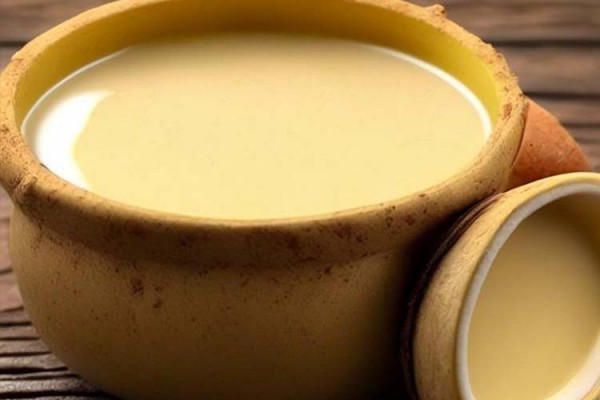Makgeolli ()
페이지 정보
본문
Makgeolli is a type of traditional Korean alcohol.
It is called makgeolli because it is roughly or quickly filtered.
It is a brewed alcohol made by fermenting starchy materials such as rice with nuruk, making takju, removing the sediment, filtering cheongju, and filtering the remaining liquor lees through a sieve.
Since it was traditionally consumed mainly by the common people, it is strongly recognized as a local alcohol in the past and even today.
Makgeolli is cloudy and has a low alcohol content.
Makgeolli first appears in literature under the name Hondonju (混沌酒) in the book Yangjubang.
This is alcohol made by fermenting rice and nuruk, then mixing the bottom of the liquor through a sieve and filtering it after it has matured.
Then, the rice grains break down and the alcohol becomes cloudy.
After that, the liquor tax law was enacted in Han Mal, and the brewing of makgeolli was standardized.
The method of making makgeolli in Seoul around 1906 was as follows.
Soak 5 or 6 mal of rice in water for one jar, leave it overnight, then take it out the next day, dry it, and crush it roughly.
Steam it, spread it in a sack, let it cool, then roughly grind two coarse yeast mixed with wheat bran and mix them together. Put this in a jar, add about three cups of water, and leave it to mature for 2 or 3 days or 4 or 5 days. (At that time, it was common for makgeolli to not be made with a starter.)
Once matured, strain it through a sieve, crush the rice grains with the palm of your hand, and add water again to filter it.
Crush the rice grains with your palm and filter it.
This is called makgeolli.
The preservation period of makgeolli is 4 or 5 days.
After this period, it becomes rancid (a phenomenon in which organic substances such as alcohol or fat are hydrolyzed or oxidized by the action of oxygen, light, heat, bacteria, enzymes, etc. in the air, creating free fatty acids and various oxides) and cannot be preserved for a long time.
It has a strong acid smell and taste and the alcohol concentration is around 4.5 degrees.
It is usually brewed a lot from September or October to April or May of the following year, and not brewed much in the summer because rancidity occurs quickly.
There was a food shortage during the late Japanese colonial period. Even after liberation, we could not escape the chronic food shortage, so we imported a lot of foreign grains.
Therefore, the use of rice in makgeolli was banned in 1964, and it was brewed by mixing imported grains of 80% wheat flour and 20% corn.
As a result, the quality of the liquor deteriorated when wheat flour was used.
Therefore, the common people leaned toward soju, and the middle class and above turned to beer and liquor.
After that, rice production increased and consumption decreased, so there was a surplus of rice.
So rice makgeolli was permitted again in 1971.
However, because of the standardization of the brewing method, it does not taste the same as before.
And it was expensive, so it disappeared in a year.
As a result, makgeolli was made with wheat flour again.
Today, makgeolli made with rice is loved due to the makgeolli craze, and has become our traditional liquor.
- 이전글Makgeolli (막걸리, Makkoli, Makgeolli, 米酒, 马格利, 막 걸러 낸 술) 25.01.18
- 다음글マッコリ (막걸리, Makkoli, Makgeolli, 米酒, 马格利, 막 걸러 낸 술) 25.01.18
댓글목록
등록된 댓글이 없습니다.











